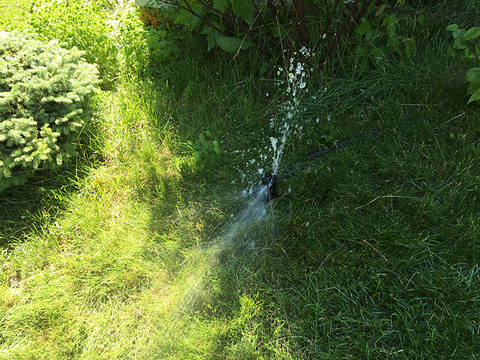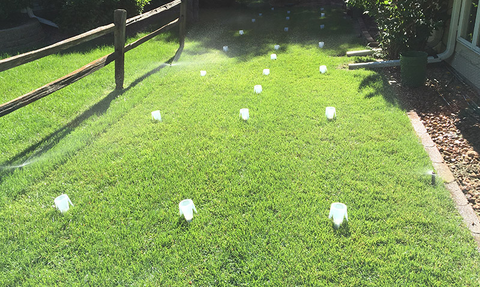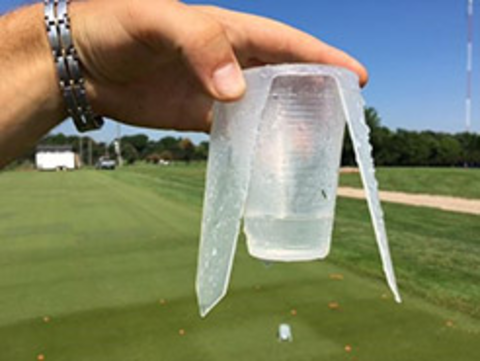Conducting an inspection of your home watering system is an important practice for maximizing water use. Audits ensure that water is applied evenly to all areas of the lawn and determine how long a system should run. Homeowners should perform a basic irrigation audit every spring as systems are charged up for the growing season. Below is a step-by-step guide to auditing your home lawn irrigation system.
Step 1: System inspection
Run each irrigation zone and look for broken sprinklers, low water pressure and water spraying where it is not needed (e.g., on streets). Replace any broken sprinklers, correct water pressure accordingly, and make adjustments so your system is supplying water only where you want it.
Step 2: Performance testing
To begin the performance test, place catch cans on the lawn in an evenly-spaced grid pattern throughout an individual irrigation zone.
Place cans 5 to 8 feet apart for small area spray-sprinklers and 10 to 20 feet apart for large area rotor-type sprinklers.
Use a minimum of 20 cans for each irrigation zone; more cans allow for greater accuracy. Tuna or coffee cans work well for this, or you can purchase cans made specifically for conducting these audits.
After you place the catch cans throughout an irrigation zone, run the zone for 30 to 60 minutes. You will get more accurate results from a longer run time.
Next, measure and record the depth in inches of water in each can.
Repeat this procedure for each individual zone of your irrigation system.
Step 3: Uniformity calculations and scheduling zones
Calculating the uniformity and precipitation rates of your watering system will tell you how long to set your watering time and if your lawn is being watered evenly.
Precipitation rate calculations
To calculate the precipitation rate, average the depth of water in the catch cans after one hour of run time.
For example, if the average depth of our 20 cans was 0.75 inches and we ran the zone for 30 minutes, our precipitation rate would be 1.5 inches per hour.
Once you have calculated the precipitation rate for each zone, you can set the run times. For example, if your goal is to apply 0.5 inches in one irrigation cycle and the precipitation rate is 1.5 inches per hour, you would set the zone for 20 minutes.
Uniformity calculations
Calculating uniformity will tell you if your watering system is over-watering or under-watering in certain areas. For uniformity calculations, take the average depth of the lowest 25 percent of cans (If you used 20 cans, this would be the five lowest cans) and divide by the overall average of all cans.
For example, if the average of our five lowest measuring cans is 0.5 inches, divide 0.5 by 0.75 = 0.67 or 67 percent. Irrigation systems with lower than 60 percent uniformity should be adjusted for more uniform coverage.
Reviewed in 2024




